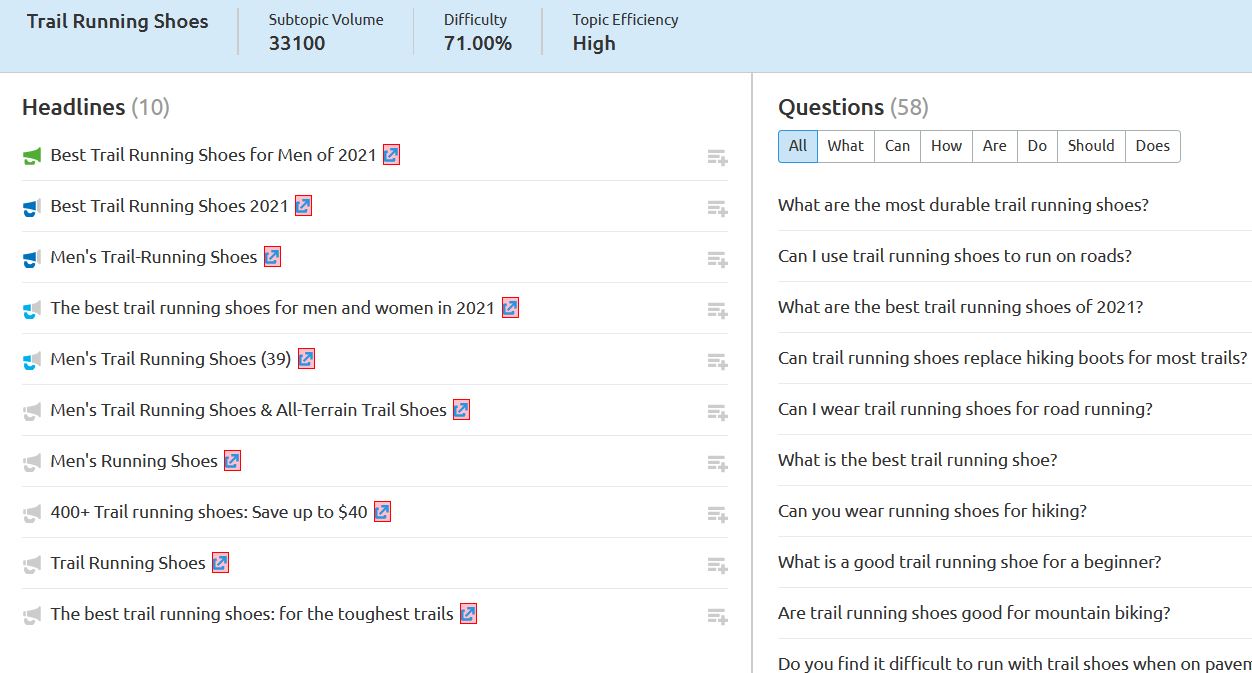
Everyone! This is the most common answer to the question, „Who is your customer?” What is the response I often hear when I ask about the target audience in a foreign market, chosen by the client, for example let’s say, Germany? „Germans”, of course.
On the one hand, if you are the owner of an online store or service website, you want your offer to benefit all the users. Let’s delve deeper — when developing a business in foreign markets, ideally the goal is to attract all residents of a given country. However, in reality it’s not how it works. Specify your target audience, and above all, specify their personas.
A buyer persona is considered as the leader of your entire target audience. A fictional representation of your customers: similar buying behaviors; the goals they want to achieve; what they are interested in and how they spend their time. The persona is meant to reflect your ideal customer who should buy your product or use the service. It is considered a good business practice to create up to 3 or 4 personas! Create an outline of a perfect customer, and target your marketing activities (personalization of ads, social media communication, content created on the website and its structure) directly at that persona.
Conducting international business without specifying your target audience will not produce the desired effect. Even with a well-specified target audience, not every click leads to a conversion. Specifying for who exactly you want to offer your services to and create products for can produce more tangible benefits. Who is this person? What do they like? What are their interests? What are their purchasing behaviors?
The goal behind digital marketing efforts is to direct the attention of millions of online users towards one particular website. However, after some time, it turns out that the website traffic does not bring conversions. Of course, there can be various reasons for this, but quite often it is a poor audience choice.
„Google’s website guidelines are the same for every place in the world,” is how I usually respond when someone asks me what changes should be made to an online store in the Czech Republic or in Spain. However, the fundamental difference lies in adapting the site according to the user characteristics of that country.
One of the most common mistakes made by people launching a foreign expansion is to define the audience through the eyes of the native target group. You don’t have to look far for examples, even in our market we have situations when the owner of a successful Polish online store ventures into another business market and is convinced that the user will be the same as in Poland. The reality, however, is quite different, and the amount of work and resources put into expansion may not bring the expected benefits.
There are a number of possibilities here. Some good basic examples are:
Your current customers — when you are already operating in a given foreign market — will be considered the baseline. Some website platforms may have the possibility to collect demographic data about your customers (Shopify or PrestaShop, for example, have such an option after installing the appropriate module). However, this data is often quite limited and relates mainly to the location. One of the best tools to use is simply Google Analytics. If you properly configure the option to collect user data (Administration -> Service -> Service Settings), after some time you will receive full access to very detailed data, such as: gender, age, interests, geolocation, language, behavior. They will be discussed in greater detail later in the article.
… or simpy – ask your client!
Well thought-out UX research, in the form of questionnaire surveys, can provide answers that no tool will ever disclose.
What if you have just finished creating a new website? How do you find out who your potential customers are on the German, Spanish, American or any other market then? At this point, a helping hand (willingly or unwillingly) is extended to you by your competitors!
Competitor analysis is not just information about key phrases or visibility benchmarking. It’s an opportunity to get to know your target customer better. Even if solely in terms of their interests. One way to get a picture of what your competitors’ customers are interested in is through a blog. In today’s world of SEO and focus on content, virtually every site (store or service) runs a blog. So how can you benefit from this?
When building website visibility and traffic, you should always define a group of key phrases allowing customers to land on your site, and have Google link thematically. What if I told you that key phrases can help you figure out who your buyer persona is?
A number of analytics tools these days have been increasingly offering the option to analyze content for blog post topic ideas. This way you edit your blog to suit your audience perfectly, without shooting in the dark. Many tools (such as Semrush) have a popular questions feature. How does it work?
After typing in your phrase, for example, „running shoes,” while specifying the US market, you receive dozens of questions divided into the most popular categories related to the topic. We can see that a potential running customer is mostly interested in brands such as Nike, Asics, Adidas, New Balance. Therefore, we can assume that the buyer persona for an online running shoe store in the US will be a person who is well aware of the importance of selecting a good brand and is likely to invest more (has a higher material status). Perhaps they are not a beginner, but already an advanced runner? This in turn shows us the detailed questions for these respective categories.
 Source: semrush.com
Source: semrush.com
In this case, one of the categories is „Trail Running Shoes”, where we find questions such as ” Can I use trail shoes for street running?”, „What are the best trail shoes?”. So we can specify that the customer interested in running shoes will predominantly be a male who likes mountains (climbing, mountain biking), looking for versatile shoes for running on difficult terrain, but also runs recreationally in the city.
In this case, one of the categories is „Trail Running Shoes”, where we find questions such as ” Can I use trail shoes for street running?”, „What are the best trail shoes?”. So we can specify that the customer interested in running shoes will predominantly be a male who likes mountains (climbing, mountain biking), looking for versatile shoes for running on difficult terrain, but also runs recreationally in the city.
 Source: semrush.com
Source: semrush.com
Let’s take a closer look at how to further define our persona for a specific market. As an example, we can take the US and an online clothing store. Earlier I mentioned what a huge source of information about your customers is Google Analytics, and now let’s use its data.
Our client in the example sells clothing, but they offer mostly women’s clothing, and is not satisfied with the sales. Data shows that most of their customers are men. And here we find our first clue: maybe it’s worth slightly changing the product range to suit a male audience?
 Source: Google Analytics
Source: Google Analytics
In the case of a country as large as the US, this will be especially important in terms of…for example, climate.
If you see from the data that the main traffic source is customers from California, it is unlikely they will be looking for winter clothing. This information alone will allow you to better tailor your product offer and include the region in your content. For instance, with a blog post on the following topic: „How to dress for a date on Santa Monica Beach?”.
 Source: Google Analytics
Source: Google Analytics
How to take advantage of this information? It may be worthwhile (if the percentage of such customers is significant) to launch a Spanish-language version within the domain.
Based on our example, we can see that users are more interested in shopping, fine dining, fashion and beauty than sports. For the customer, this may mean that promoting sportswear at all costs instead of casual or party wear will not comply with „the more I spend on advertising running pants, the better.”
 Source: Google Analytics
Source: Google Analytics
Of course, you can cross-reference this type of data any way you like — select a specific age group from a specific location and add interests to it. You have just created a solid base for a buyer persona targeting the US market for your online clothing store.
An adult male, under 30, living in California (Los Angeles to be exact). He loves shopping (mostly luxury goods) and fine dining with family and friends. He visits shopping malls and restaurants more often than spending time on sports. He is interested in fashion and media entertainment.
At the beginning of the article I mentioned that, in fact, you can even create multiple personas. What’s the advantage? You will find it easier to segment your customer base according to the type of persona they fit into. This way, you’ll have a perfect way to make your business stand out from the competition (and if your competitors are already doing it, and you still aren’t?!). Personalized newsletters, messaging campaigns, content created within the site and on social media — these are just a few practical ways to use customer segmentation using the created persona.